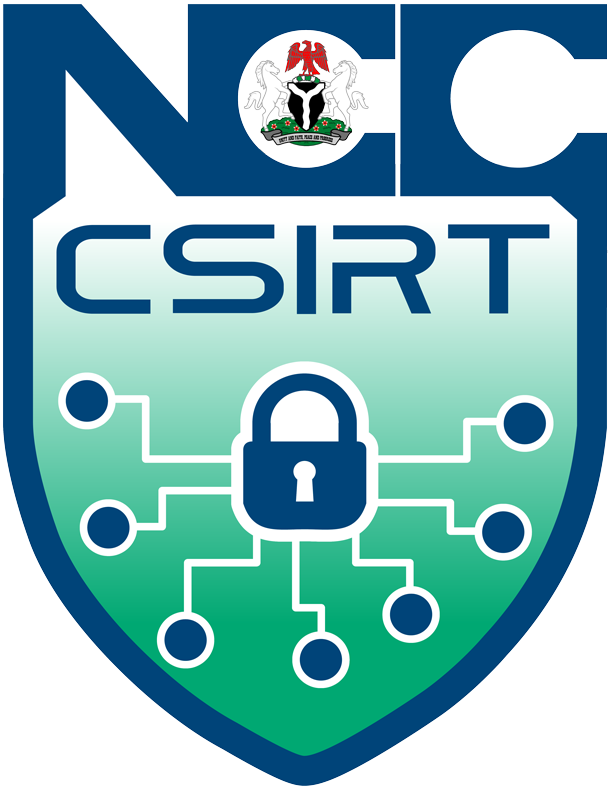Advisory ID: ngCERT-2025-100008
SUMMARY
ngCERT has observed a growing dependence on SSL/TLS (Secure Sockets Layer/Transport Layer Security) protocols, which are essential for securing data transmission across digital networks, particularly the internet. While SSL, introduced in the 1990s, has been deprecated due to significant security flaws, TLS, currently at version 1.3, serves as the modern, robust standard. TLS secures communication by encrypting data, authenticating parties through digital certificates, and ensuring data integrity via a secure handshake process that negotiates cryptographic parameters and exchanges keys. Beyond its role in securing websites (HTTPS), TLS also protects email, VoIP, messaging applications, and VPNs. Proper implementation is critical to defending sensitive information such as login credentials, financial data, and personal records from threats like man-in-the-middle attacks, data interception, and protocol downgrades. ngCERT advises organisations to disable outdated protocols (SSL, TLS 1.0/1.1), enforce strong cipher suites, maintain up-to-date systems, and use valid, trusted digital certificates to reduce risk and ensure secure communications.
Damage: Critical
Probability: High
Platform(s): Web
DESCRIPTION
SSL/TLS (Secure Sockets Layer/Transport Layer Security) are cryptographic protocols fundamental to securing data transmission over digital networks by providing confidentiality, authentication, and data integrity. SSL, developed in the 1990s, was widely used but is now obsolete due to inherent vulnerabilities. It has been replaced by TLS, which is the current industry standard. TLS protects data by encrypting information transmitted between clients and servers, verifying identities using digital certificates issued by trusted Certificate Authorities (CAs), and ensuring that data is not modified during transit. The process begins with a TLS handshake in which both parties agree on supported cryptographic algorithms (cipher suites), exchange keys securely, and establish a session key for encrypted communication. TLS 1.3, the latest version, improves security by removing insecure algorithms, reducing handshake latency, and simplifying protocol operations. TLS underpins the security of a wide range of services including HTTPS websites, secure email (SMTP, IMAP, POP3), VPNs, VoIP, and messaging apps. As online services increasingly handle sensitive information, TLS plays a vital role in defending against cyber threats such as man-in-the-middle attacks, certificate spoofing, protocol downgrade attacks, and data interception. It is a cornerstone of modern digital security and privacy in today's interconnected world.
CONSEQUENCES
- Data Exposure: Unencrypted or improperly secured transmissions may allow attackers to intercept passwords, personal data, and financial details.
- Man-in-the-Middle (MitM) Attacks: Attackers can intercept or manipulate data by impersonating legitimate communication endpoints.
- Protocol Downgrade Attacks: Attackers may force connections to use outdated and vulnerable SSL/TLS versions.
- Certificate Issues: Use of expired, misissued, or untrusted certificates can cause service disruptions and trigger browser warnings.
- Loss of User Trust: Security incidents can damage brand reputation and reduce customer confidence in digital services.
- Regulatory Non-Compliance: Inadequate data protection may violate laws such as GDPR, HIPAA, or PCI-DSS, leading to penalties.
- Financial Loss: Breaches and compliance failures can result in legal costs, fines, and lost revenue.
- Compromised Integrity: Data may be altered in transit without detection, causing misinformation or injecting malicious payloads.
- Service Disruption: Exploited vulnerabilities in SSL/TLS implementations can result in denial-of-service or related attacks.
SOLUTION/MITIGATION
ngCERT recommends the following:
- Use Latest TLS Versions: Disable SSL, TLS 1.0, and TLS 1.1; enforce TLS 1.2 or TLS 1.3 for all encrypted communications.
- Implement Strong Cipher Suites: Use modern, secure encryption algorithms; avoid outdated or weak ciphers such as RC4, DES, or MD5.
- Obtain Certificates from Trusted CAs: Ensure all digital certificates are issued by reputable Certificate Authorities.
- Regularly Renew and Manage Certificates: Track certificate expiration dates and renew or revoke them as needed to avoid security lapses.
- Enable Certificate Validation: Ensure clients validate server certificates to detect spoofed or forged certificates.
- Use Certificate Pinning (Where Applicable): Bind clients to specific, trusted certificates to prevent impersonation attacks.
- Keep Software Up to Date: Regularly patch TLS libraries (e.g., OpenSSL), web servers, and dependent applications.
- Perform Regular Security Audits: Conduct vulnerability assessments and penetration tests focused on TLS configurations.
- Enforce HTTP Strict Transport Security (HSTS): Mandate HTTPS-only connections to prevent downgrade attacks and mixed-content issues.
HYPERLINK
- www.acunetix.com/blog/articles/tls-vulnerabilities-attacks-final-part/
- www.freecodecamp.org/news/attacks-on-ssl-tls-and-how-to-protect-your-system/
- certera.com/blog/common-ssl-tls-challenges-issues-attacks-to-exploits/
- akimbocore.com/article/hardening-ssl-tls-common-ssl-security-issues-vulnerabilities/
